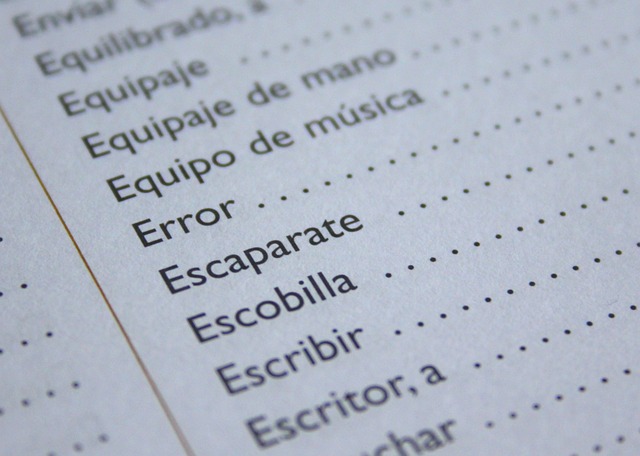Rapid Translate Team
Becoming a Spanish interpreter is an attractive career choice if you’re fluent in Spanish, English, or other languages. These professionals translate spoken language for people who may not struggle to understand each other. If you’re considering this career path, you may have questions about how to become a Spanish Interpreter.
Spanish interpretation requires fluency in both English and Spanish. Since interpreters work in various fields, you must also have some specialized knowledge. Then, certification is often a requirement.
Read on to determine the steps to becoming a professional in this field.

Table of Contents
How To Become a Spanish Interpreter: What Are Their Roles?
Depending on their chosen careers, Spanish interpreters translate spoken language for people across different industries. Due to increasing migration and relations between people of different linguistic backgrounds, there is an increasing demand for interpreters. Here are the roles of Spanish interpreters:
- Medical interpretation: Spanish medical interpreters work in hospitals and medical facilities to aid communication between Spanish speakers and English-speaking healthcare professionals. They ensure that patients get the correct details about their healthcare needs.
- Legal interpretation: Legal interpreters help Spanish-speaking people communicate better during legal proceedings. These professionals mainly work with law firms and courts to assist during trials and other legal processes. This way, Spanish speakers can get fair representation.
- Government interpretation: Spanish interpreters also work with government agencies to translate information between citizens and government officials. Interpreters in this sector must understand both languages adequately to help each party understand themselves.
- Interpretation for travel and tourism: Spanish interpreters in the travel and tourism industry often work at tourist attractions, airlines, or travel companies. Here, they assist Spanish speakers with inquiries about specific tourist sites and travel details.
Interpreters in specialized fields must have some knowledge about the industry. For instance, medical knowledge is a huge plus for medical interpreters, while legal interpreters must have some background in law.

How To Become a Certified Spanish Interpreter
While getting certified is not always a requirement for becoming a Spanish interpreter, it is a standard in many industries. Since you’ll work in different fields and official environments, consider getting that certification to add to your pedigree. Here is how to become a certified Spanish interpreter.
1. Become Fluent in the Spanish Language
This first step is the baseline of becoming a Spanish interpreter. You must become fluent in Spanish and another language, most often English. Besides simply understanding the language, you must gain a high level of mastery in these languages.
Students should build a robust vocabulary and gain cultural knowledge to understand its nuances. Attending a Spanish immersion program is a great way to create cultural awareness of the language.
2. Complete an Undergraduate Degree
A Spanish degree is not a requirement to become an interpreter of the language. Many professional certificate programs help you build crucial interpreter skills. Yet, completing an undergraduate degree is a great way to get good credentials for your career ahead.
Formal education gives you an advantage when you’re looking for a job. It also helps you develop your skills. This way, you’re more qualified for any role as an interpreter.
Many educational institutions offer bachelor’s degrees in Spanish. These help you learn more about the language as well as the culture. Other universities offer degrees in Spanish to English translation and interpretation. Here, you can learn about the career and any specializations.
3. Gain Useful Experience
As an aspiring Spanish interpreter, getting relevant experience in the field can be quite beneficial. Besides honing your skills, it can also help you build a solid professional resume. While working on your degree, consider pursuing other opportunities like internships and language programs.
Interning at companies or facilities that need Spanish interpretation can help you understand the career before you leave school. Studying abroad in Spanish-speaking countries is another brilliant way to improve your knowledge of the language and culture.
4. Obtain Certification
Invest in getting a relevant certification to further your career as a Spanish interpreter. You have several options to choose from when looking for certification. The most popular is the American Translators Association (ATA) certification, which tests your language knowledge before getting accreditation.
However, depending on your specialization, you can choose other certification programs as a Spanish interpreter. For instance, medical translators can opt for the Certified Medical Interpreter (CMI) certification. Either way, you must pass a certified interpreter exam to go further.

How To Become a Spanish Medical Interpreter
Becoming a Spanish medical interpreter involves both language skills and an understanding of medical terminology. Interpreters’ roles involve ensuring that patients understand their treatment options and diagnoses. They also help medical practitioners communicate effectively with their patients.
Here is how to become a Spanish medical interpreter:
- Earn your high school diploma and take Spanish-related college-level courses.
- Become proficient in Spanish and English or any other language.
- Complete your bachelor’s degree in a Spanish-related course.
- Complete a medical interpreter training.
- Apply for a certification and keep it updated.
In the U.S., you can apply for any of two certifications if you’re aspiring to become a certified medical interpreter. You can go for the Certified Healthcare Interpreter (CHI) or the Certified Medical Interpreter (CMI) certification.
How Long Does It Take to Become a Spanish Interpreter?
The time it takes to become a Spanish interpreter depends on your current language proficiency and education. If you’re fluent in Spanish, you may need months or years to complete your training and become certified.
Most aspiring Spanish interpreters begin with degrees in languages or related fields. This process alone takes up to four years. After that, you may need specialized formal training, which can take months. Overall, it takes one to three years on average to achieve this.
Get Accurate Spanish Translations From Rapid Translate
After understanding how to become a Spanish Interpreter, are you looking for accurate and reliable Spanish translation services? At Rapid Translate, we offer certified translations across legal, business, immigration, and medical documents.
Our agency provides the fastest turnaround on orders, delivering regular orders within 24 hours. You can also get notarized translations and rushed mail options for an extra fee. Act now and get accurate Spanish translations from Rapid Translate today!

FAQ
Now that we’ve covered becoming a Spanish interpreter, let’s dive into some frequently asked questions!
What types of certification should I consider as a Spanish interpreter?
As a Spanish interpreter, consider certifications from the American Translators Association (ATA). The court interpreter, Certified Medical Interpreter (CMI), and Certified Healthcare Interpreter (CHI) certifications are also valid options.
What skills do I need to become a Spanish interpreter?
To become a Spanish interpreter, you’ll first need to be fluent in Spanish, English, or another language. You’ll also need cultural and technical knowledge, good comprehension, and quick decision-making skills.




